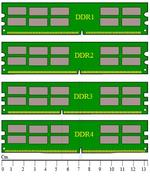Understanding CAN XL Protocol in Automotive Networks
Explore CAN XL, the next-gen Controller Area Network protocol designed for high-speed, reliable communication in modern vehicles, bridging the gap between CAN FD and Ethernet.
Showing 20 posts (Page 136 of 162)
Advertisement
Explore CAN XL, the next-gen Controller Area Network protocol designed for high-speed, reliable communication in modern vehicles, bridging the gap between CAN FD and Ethernet.

Learn about CBRS, a shared spectrum service in the US, its tiers (Incumbent, PAL, GAA), network architecture, and advantages for users and operators.
CBRS is a wireless communication system using the 3550-3700 MHz band (LTE band 48 in the US). It enables shared spectrum access for 4G LTE and 5G NR, benefiting enterprises and industries.
Learn about CDMA (Code Division Multiple Access), a mobile communication technology known for its security features through spread spectrum modulation using PN codes.
Learn about characteristic impedance (Z₀), its definition, and equations for calculating it in various transmission lines, including parallel, coaxial, and striplines.
Explore the definition, types, benefits, and limitations of clean energy, including renewable and low-emission sources, and their environmental impact.
CCDF is a statistical power calculation for time-domain data, useful in analyzing power variations in signals, especially for power amplifier design.

Explore Computer Telephony Integration (CTI), its evolution, functions like call routing and record retrieval, and applications in voice response systems and contact centers.

Explore crosstalk in fiber optic networks: its definition, occurrence, and implications, particularly in WDM systems. Learn about far-end crosstalk and isolation techniques.

Explore daisy chaining, a method of connecting devices in a series. Learn its benefits, like simplified hardware and scalability, and its application with Ethernet switches.
Explore the concept of data rate in wireless communication, its calculation, and typical data rates for various wireless technologies like GSM, LTE, and more.

Explore DDR SDRAM, its evolution from DDR1 to DDR4, and its advantages in speed, power efficiency, and system performance over SDR SDRAM.

Decimation reduces a signal's sampling rate by removing samples. Learn about the process, the Nyquist-Shannon theorem, and the MATLAB command for decimation.

Explore delay spread and Doppler spread, key concepts in wireless communication affecting signal propagation and system performance.

Explore the dGPS (Differential Global Positioning System), its working principles, advantages, disadvantages, and differences compared to standard GPS for precise location accuracy.

Explore various antenna types like horn, parabolic, dipole, and microstrip, understanding their applications in wireless communication, mobile systems, and computing.
Explore various types of energy (mechanical, thermal, electrical, chemical, nuclear, electromagnetic, sound, and gravitational), their characteristics, and measurement units.

Explore the various types of lasers, including solid-state, gas, excimer, dye, and semiconductor lasers, and their applications based on the medium used.

Explore Digital Signal Processing (DSP), its applications in various fields, key components of DSP chips, development tools, and a list of prominent DSP chip vendors.

Explore the workings of directional couplers, passive microwave devices used for signal sampling and power monitoring in RF systems.
Advertisement